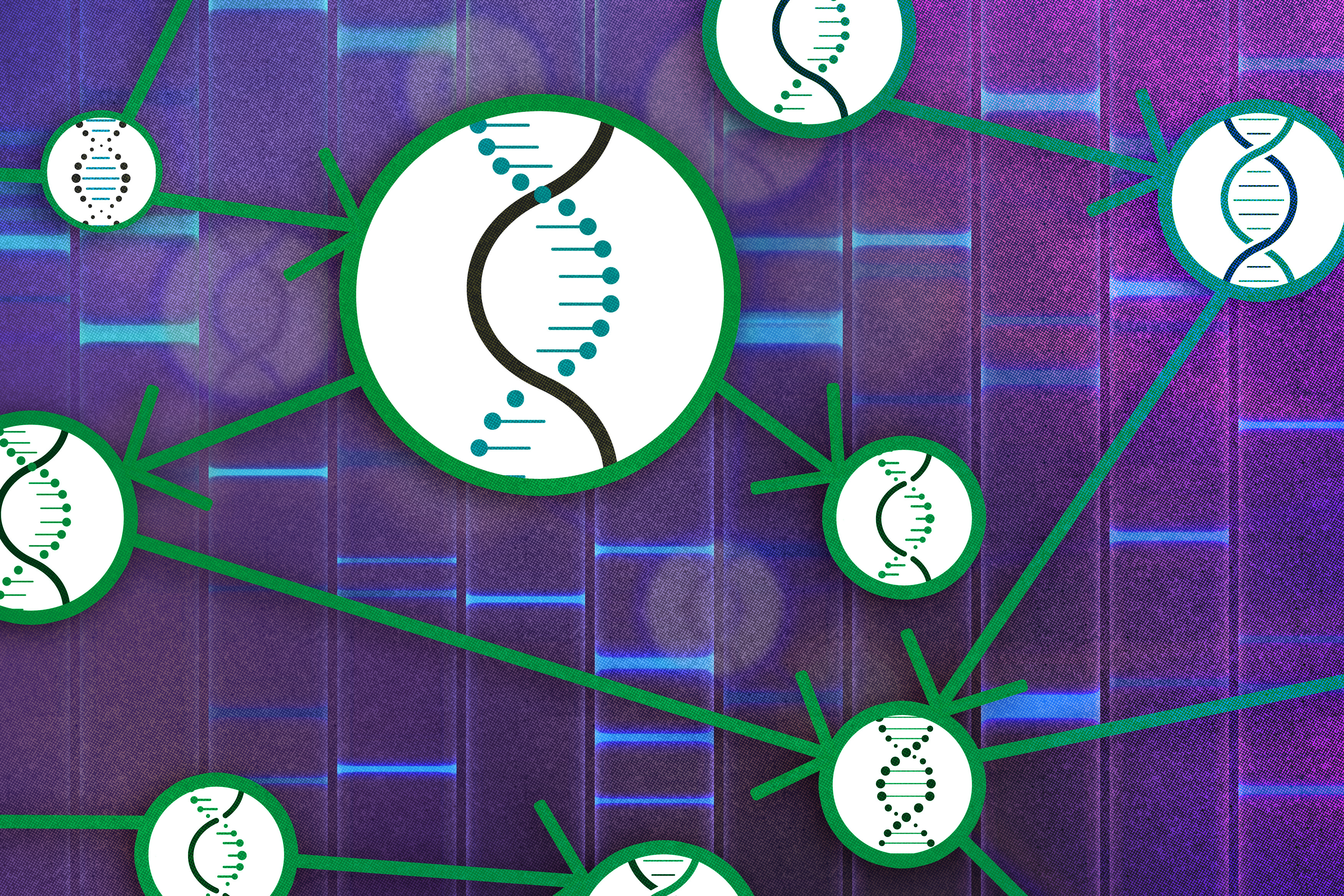Longstanding problem put to rest | MIT News
Proof that a 40-year-old algorithm is the best possible will come as a relief to computer scientists.
Comparing the genomes of different species — or different members of the same species — is the basis of a great deal of modern biology. DNA sequences that are conserved across species are likely to be functionally important, while variations between members of the same species can indicate different susceptibilities to disease.
The basic algorithm for determining how much two sequences of symbols have in common — the “edit distance” between them — is now more than 40 years old. And for more than 40 years, computer science researchers have been trying to improve upon it, without much success.
At the ACM Symposium on Theory of Computing (STOC) next week, MIT researchers will report that, in all likelihood, that’s because the algorithm is as good as it gets. If a widely held assumption about computational complexity is correct, then the problem of measuring the difference between two genomes — or texts, or speech samples, or anything else that can be represented as a string of symbols — can’t be solved more efficiently.
In a sense, that’s disappointing, since a computer running the existing algorithm would take 1,000 years to exhaustively compare two human genomes. But it also means that computer scientists can stop agonizing about whether they can do better.
“This edit distance is something that I’ve been trying to get better algorithms for since I was a graduate student, in the mid-’90s,” says Piotr Indyk, a professor of computer science and engineering at MIT and a co-author of the STOC paper. “I certainly spent lots of late nights on that — without any progress whatsoever. So at least now there’s a feeling of closure. The problem can be put to sleep.”
Moreover, Indyk says, even though the paper hasn’t officially been presented yet, it’s already spawned two follow-up papers, which apply its approach to related problems. “There is a technical aspect of this paper, a certain gadget construction, that turns out to be very useful for other purposes as well,” Indyk says.
Squaring off
Edit distance is the minimum number of edits — deletions, insertions, and substitutions — required to turn one string into another. The standard algorithm for determining edit distance, known as the Wagner-Fischer algorithm, assigns each symbol of one string to a column in a giant grid and each symbol of the other string to a row. Then, starting in the upper left-hand corner and flooding diagonally across the grid, it fills in each square with the number of edits required to turn the string ending with the corresponding column into the string ending with the corresponding row.
Computer scientists measure algorithmic efficiency as computation time relative to the number of elements the algorithm manipulates. Since the Wagner-Fischer algorithm has to fill in every square of its grid, its running time is proportional to the product of the lengths of the two strings it’s considering. Double the lengths of the strings, and the running time quadruples. In computer parlance, the algorithm runs in quadratic time.
That may not sound terribly efficient, but quadratic time is much better than exponential time, which means that running time is proportional to 2N, where N is the number of elements the algorithm manipulates. If on some machine a quadratic-time algorithm took, say, a hundredth of a second to process 100 elements, an exponential-time algorithm would take about 100 quintillion years.
Theoretical computer science is particularly concerned with a class of problems known as NP-complete. Most researchers believe that NP-complete problems take exponential time to solve, but no one’s been able to prove it. In their STOC paper, Indyk and his student Artūrs Bačkurs demonstrate that if it’s possible to solve the edit-distance problem in less-than-quadratic time, then it’s possible to solve an NP-complete problem in less-than-exponential time. Most researchers in the computational-complexity community will take that as strong evidence that no subquadratic solution to the edit-distance problem exists.
Can’t get no satisfaction
The core NP-complete problem is known as the “satisfiability problem”: Given a host of logical constraints, is it possible to satisfy them all? For instance, say you’re throwing a dinner party, and you’re trying to decide whom to invite. You may face a number of constraints: Either Alice or Bob will have to stay home with the kids, so they can’t both come; if you invite Cindy and Dave, you’ll have to invite the rest of the book club, or they’ll know they were excluded; Ellen will bring either her husband, Fred, or her lover, George, but not both; and so on. Is there an invitation list that meets all those constraints?
In Indyk and Bačkurs’ proof, they propose that, faced with a satisfiability problem, you split the variables into two groups of roughly equivalent size: Alice, Bob, and Cindy go into one, but Walt, Yvonne, and Zack go into the other. Then, for each group, you solve for all the pertinent constraints. This could be a massively complex calculation, but not nearly as complex as solving for the group as a whole. If, for instance, Alice has a restraining order out on Zack, it doesn’t matter, because they fall in separate subgroups: It’s a constraint that doesn’t have to be met.
At this point, the problem of reconciling the solutions for the two subgroups — factoring in constraints like Alice’s restraining order — becomes a version of the edit-distance problem. And if it were possible to solve the edit-distance problem in subquadratic time, it would be possible to solve the satisfiability problem in subexponential time.
“This is really nice work,” says Barna Saha, an assistant professor of computer science at the University of Massachusetts atAmherst. “There are lots of people who have been working on this problem, because it has a big practical impact. But they won’t keep trying to develop a subquadratic algorithm, because that seems very unlikely to happen, given the result of this paper.”
As for the conjecture that the MIT researchers’ proof depends on — that NP-complete problems can’t be solved in subexponential time — “It’s a very widely believed conjecture,” Saha says. “And there are many other results in this low-polynomial-time complexity domain that rely on this conjecture.
The "Wagner-Fischer" algorithm was published by Levenshtein in 1966, almost a decade before Wagner and Fischer. So why not refer to the algorithm by a more historically accurate name, the Levenshtein Edit Distance?
Well... I guess it's up to the hardware engineers now...
Subquadratic algorithm for edit distance will not allow to solve a NP-complete problem in less-than-exponential time. It will only allow to solve it in less than 2^N time. From the abstract of the article: "then the satisfiability... can be solved in M^{O(1)}*2^{(1-\epsilon)*N} time for a constant \epsilon > 0". This is not a subexponential time.
I'm afraid the relief will only be momentary. If it's going to take 1,000 CPU years to calculate the edit distance between two genomes, there will still be plenty of opportunity to spend sleepless nights looking for faster/bounded approximation algorithms. (Looks like one such out of MIT is the first Google result for "approximate edit distance".)
Anyone has a link to the paper ?
A proof that rides on an assumtion.
Artūrs Bačkurs, you make Latvia proud! :)
Levenshtein distance isn't the only measure. There are a variety of possible edit distances (e.g. to include transpositions or not).
Also, I could have sworn I read an article about a clever shortcut for computing the distance using a cache. Now that I think about it more, I've also read about being able to compare data sets post compression. So that should be an interesting area of research with regard to this.
a pair of strings could be used for 2 fundamentally different methods of computation and be far closer than they appear...the proof assumes that both strings are used in the exact same way with no inner regrouping I presume...I would dare say that you would need to look for relations between the two, know precisely how each string will be used to make such an assumption...I could be wrong
Reprinted with permission of MIT News

